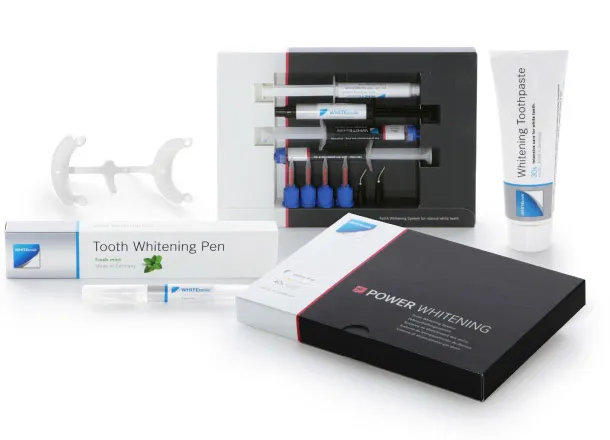What is Power Whitening?
Power whitening, also known as in-office teeth whitening, is a cosmetic dental procedure designed to significantly brighten your smile in a single appointment. Unlike at-home whitening kits, power whitening is performed by a dental professional. The process involves applying a high-concentration bleaching agent to the teeth, which is then activated, often with a special light or laser. This process accelerates the whitening process, resulting in dramatic and immediate results. Power whitening is an effective solution for those seeking rapid and noticeable improvements in the color of their teeth, addressing stains caused by coffee, tea, tobacco, or aging. The procedure’s popularity stems from its convenience and the significant cosmetic benefits it provides.
The Power Whitening Process
The power whitening process typically begins with a consultation and examination by your dentist to assess your oral health and determine if you are a suitable candidate for the procedure. Before the whitening treatment starts, your teeth are cleaned to remove any surface stains and plaque. A protective barrier, like a cheek retractor and a gingival dam, is then applied to protect your gums and soft tissues from the bleaching agent. The dentist then applies the whitening solution to the teeth, often multiple times during the session. A special light or laser might be used to enhance the whitening process, breaking down the stains more quickly. Each application of the whitening agent typically lasts for about 15 to 20 minutes. After the final application, the dentist removes the protective barriers, rinses your mouth, and provides after-care instructions.
Factors That Influence Power Whitening Cost

Several factors influence the overall power whitening cost. These can vary significantly depending on several factors, including geographic location, the specific clinic or dentist’s pricing structure, and the type of whitening system used. Costs can also be affected by the dentist’s level of experience and reputation, the complexity of the case, and any additional services required. Understanding these factors can help you make an informed decision and manage your expectations regarding the total cost of the procedure. Additionally, it is important to consider that the cost of power whitening typically includes the initial consultation, the procedure itself, and any necessary follow-up appointments or after-care products.
Location and Clinic Type
The geographical location of the dental practice significantly impacts the power whitening cost. Clinics in major metropolitan areas often have higher operating costs, leading to increased prices for procedures like teeth whitening. Similarly, the type of dental practice can affect the cost. Private practices may charge more compared to dental schools or community clinics. It is advisable to research local dental practices and compare prices in your area to understand the prevailing costs. Checking reviews and understanding what is included in the quoted price are also important considerations when evaluating different clinics and their power whitening costs. Factors like the clinic’s overhead, including rent, equipment, and staff salaries, will influence the final cost you pay.
The Dentist’s Experience
The experience and expertise of the dentist performing the power whitening procedure are directly correlated with the cost. Dentists with extensive experience, specialized training, and a strong reputation often charge more for their services. This is due to their proven track record of successful results, expertise in handling complex cases, and the higher quality of care they offer. While it is tempting to opt for the cheapest option, it is crucial to consider the dentist’s qualifications and experience, as these factors can significantly impact the outcome of the whitening treatment. Reading reviews, checking before-and-after photos, and inquiring about the dentist’s training and experience can help you make an informed decision. Paying more for an experienced dentist can ensure better results and minimize the risk of complications.
The Type of Whitening System Used

The type of whitening system used also affects the overall power whitening cost. Different systems utilize varying formulations of bleaching agents and activation methods. Some systems may include advanced technologies, such as LED or laser light activation, which can further enhance the whitening effects. These advanced systems may be more expensive than standard methods. The brand of the whitening system and the specific products used can also impact the cost. Some dentists use premium whitening systems that are known for their effectiveness and safety, which naturally come at a higher price. Researching the different whitening systems available and understanding their benefits can help you determine which option best suits your needs and budget. The type of system used can also influence the duration of the treatment and the degree of whitening achieved.
Additional Costs
In addition to the primary cost of the power whitening procedure, there may be several additional costs to consider. These can include the initial consultation fee, X-rays to assess your dental health, and the cost of a teeth cleaning before the whitening treatment. Some clinics may offer custom-made whitening trays for touch-ups at home, which would be an added expense. After the procedure, you might need to purchase desensitizing toothpaste to reduce tooth sensitivity. Furthermore, if you have any existing dental work, such as fillings or crowns, these might not whiten with the power whitening treatment, and you may need to factor in the cost of replacing or re-doing them to match your newly whitened teeth. Always inquire about all potential costs upfront to avoid any unexpected surprises.
Comparing Power Whitening Cost
Comparing power whitening costs involves a thorough examination of different clinics and dentists to find the best value. Start by gathering price quotes from several dental practices in your area. Ask about what is included in the price, such as the consultation, the procedure, and any after-care products. Compare the prices, the experience of the dentist, and the type of whitening system used. Check online reviews and testimonials to gauge the quality of service and the satisfaction of previous patients. Consider the overall value, which includes not only the price but also the quality of care, the expertise of the dentist, and the results you can expect to achieve. Choosing the cheapest option may not always be the best choice; consider the overall value and what you receive for your investment.
Power Whitening vs Other Whitening Methods

Power whitening offers a convenient and effective solution for teeth whitening, but it is not the only option available. Other methods include at-home whitening kits, over-the-counter whitening products, and professional whitening treatments. At-home kits are generally less expensive but require more time and may not achieve the same dramatic results as power whitening. Over-the-counter whitening products, such as whitening toothpaste and strips, are the most affordable but often produce only subtle changes in tooth color. Professional whitening treatments, such as custom-made trays, provide a balance between cost and effectiveness. When deciding which method is right for you, consider your budget, the desired level of whitening, and the time you are willing to dedicate to the process. Consulting with your dentist is advisable to determine the best method for your specific needs and oral health conditions.
Pros and Cons of Power Whitening
Power whitening offers several advantages. The most significant benefit is the immediate and noticeable results achieved in a single dental visit. The procedure is typically safe and performed under professional supervision, minimizing the risk of complications. Power whitening is also convenient, saving you the time and effort required by at-home whitening methods. However, power whitening has some disadvantages. The cost is significantly higher than other whitening options. Some individuals may experience temporary tooth sensitivity or gum irritation. The results are not permanent, and touch-up treatments may be needed to maintain the desired level of whiteness. Finally, power whitening may not be suitable for everyone, particularly those with sensitive teeth, gum disease, or certain dental conditions. Understanding the pros and cons is essential to making an informed decision.
How to Find Affordable Power Whitening
Finding affordable power whitening involves several strategies. Research and compare prices from different dental clinics in your area. Look for clinics that offer special promotions, discounts, or payment plans to make the procedure more affordable. Consider dental schools or community clinics, which often offer reduced prices for dental services. Check online for coupons and discounts on teeth whitening procedures. Ask your dentist about financing options or payment plans. Inquire whether your dental insurance covers any part of the procedure. Prioritizing your oral health and being proactive in your search can help you find affordable power whitening options without sacrificing quality. Ensure you understand the terms and conditions of any discounts or payment plans before committing to the procedure.
Tips to Reduce Power Whitening Cost

Several steps can help reduce the power whitening cost. Schedule your appointment during off-peak times or seasons when clinics might offer special discounts. Inquire about package deals that include teeth whitening with other dental services, such as a check-up and cleaning. Ask your dentist about alternative whitening options that might be more cost-effective. Maintain good oral hygiene to prevent stains from forming and prolong the results of the whitening treatment. Explore whether your dental insurance covers any portion of the whitening treatment, as some plans may provide coverage for cosmetic procedures. By being proactive, comparing prices, and seeking out promotions, you can significantly reduce the power whitening cost without compromising your desired results.
Maintaining Your White Smile
Maintaining your white smile after power whitening requires a consistent oral hygiene routine and certain lifestyle adjustments. Brush your teeth twice daily with a whitening toothpaste to remove surface stains. Floss daily to remove plaque and bacteria, which can contribute to discoloration. Avoid or limit foods and beverages that can stain your teeth, such as coffee, tea, red wine, and berries. Consider using a straw to minimize contact between staining liquids and your teeth. Avoid smoking and using tobacco products, which are major contributors to tooth discoloration. Schedule regular dental check-ups and professional cleanings to maintain optimal oral health and remove any accumulated stains. Consider periodic touch-up treatments with at-home whitening kits or in-office procedures to keep your teeth looking bright and white.
